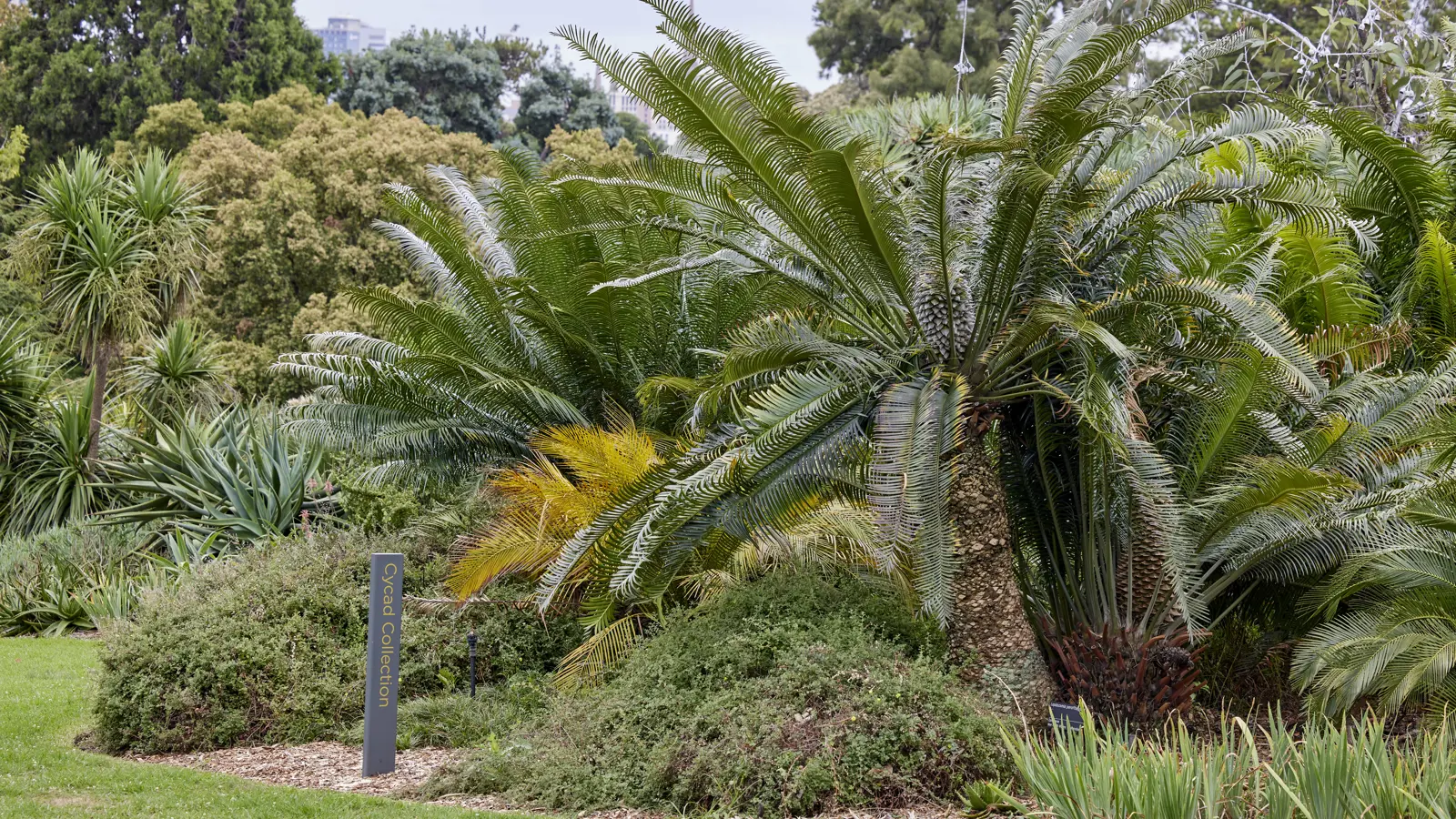
Cycad
Cycads are one of the most ancient plant lineages, and the many magnificent specimens in Melbourne Gardens evoke a prehistoric epoch with their form and structure. Cycads are now endangered worldwide as a result of habitat loss, climate change and poaching. This collection is an important conservation effort, and due to the suitability of cycads to Melbourne’s future climate, will only grow with time.
This Collection is important as it:
- Conserves an ex situ living collection of an exceptional plant family.
- Educates visitors about the unique features of this family and the ethnobotanical history in Australia and around the world.
- Provides healthy specimens for research and study.

Notes from the Curator
Cycads are a fascinating and ancient plant lineage, first appearing in the Permian Period around 280 million years ago. The Jurassic Period came to be known as the “Age of Cycads”, though this proved a misnomer as we now know that unrelated but very similar looking plants called Bennettites were actually the dominant vegetation of that era. We are fortunate to have a number of cycad genera native to Australia. Their massive ‘cones’ and seeds are indicative of the now-extinct megafauna which grazed upon them, and the First Peoples of Australia and around the world have a long history of using them for food and crafting materials. Cycads are one of the most critically endangered groups of plants in the world today, and ex situ collections like our own are important for their conservation.






